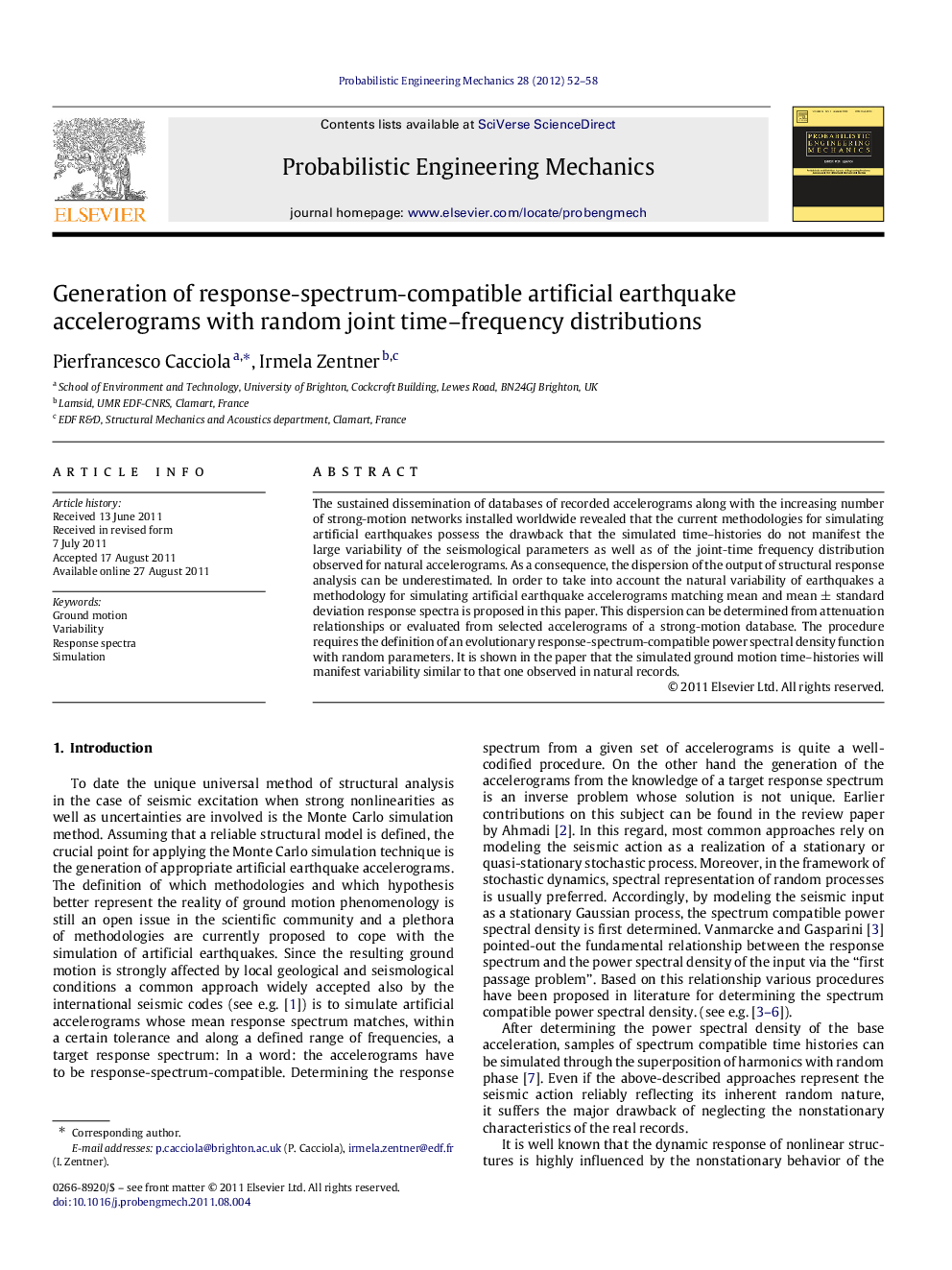| Article ID | Journal | Published Year | Pages | File Type |
|---|---|---|---|---|
| 806117 | Probabilistic Engineering Mechanics | 2012 | 7 Pages |
The sustained dissemination of databases of recorded accelerograms along with the increasing number of strong-motion networks installed worldwide revealed that the current methodologies for simulating artificial earthquakes possess the drawback that the simulated time–histories do not manifest the large variability of the seismological parameters as well as of the joint-time frequency distribution observed for natural accelerograms. As a consequence, the dispersion of the output of structural response analysis can be underestimated. In order to take into account the natural variability of earthquakes a methodology for simulating artificial earthquake accelerograms matching mean and mean ±± standard deviation response spectra is proposed in this paper. This dispersion can be determined from attenuation relationships or evaluated from selected accelerograms of a strong-motion database. The procedure requires the definition of an evolutionary response-spectrum-compatible power spectral density function with random parameters. It is shown in the paper that the simulated ground motion time–histories will manifest variability similar to that one observed in natural records.
► Current methodologies simulate accelerograms too similar to each other. ► The proposed methodology considers the natural variability of real earthquakes. ► The accelerograms matches mean and standard deviation response spectra. ► Theory of fully non-stationary Gaussian random processes is exploited. ► Evolutionary power spectral density function with random coefficients.
